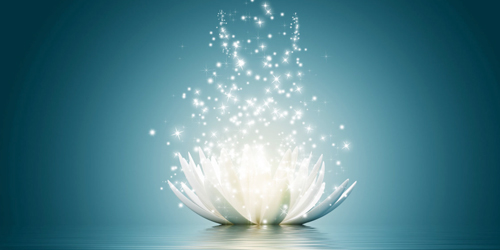Identity encompasses memories, experiences, relationships, and values that create one’s sense of self. Most of us struggle with the questions – Who am I? What is the purpose of my life? A child identifies his sense of identity with his parents, his family and community. As he progresses in age, the sense of identity keeps on changing.
For most people, the only image they have of themselves comes from the social mirrors – i.e. the views, perceptions, and ideas of the people around them. As a result, it differs from individual to individual, and at different life stages. It is largely a consequence of upbringing and socio-cultural experiences.
This is because every individual perceives us differently, with different expectations and understanding. The phrase ‘she cries at the drop of a hat’ can be interpreted differently. For some,, it means ‘she is weak’, in that she won’t be able to succeed in her life. For others, it means ‘she is very stubborn’, in that she won’t settle until she gets what she wants. Yet another interpretation could be, ‘she is a sensitive child’ – very much in tune with her feelings. Each one of them is attaching the filters of their social mirrors in forming such a view, leading to certain messages the child will imbibe. The child may develop a negative, distorted, ambiguous or an altogether positive message for herself, depending on which message she internalises.
What if the person – in this case, a little girl – grows up believing certain things about themselves? She may eventually develop some core beliefs about herself, which shapes her personality. She may even develop fears, and make decisions based on these core beliefs which impact her and other people around her. Positive core beliefs on the other hand, may be a source of self-esteem and resilience.
Maybe down the track, we come across some scenarios – i.e. people or experiences that help us evolve our understanding of ourselves. CBT Psychotherapists for example, can help us examine and even challenge our core beliefs, so that we may change them for our betterment. We come to the realization that these have never been our own beliefs, but the projections others cast upon us. They were reflections of what others thought of us – who they believed us to be. In fact, people are so out of touch with themselves that it becomes foolhardy to accurately describe others. Therapy may help us understand this, but even then, we simply exchange old beliefs for new ones.
So, the deeper question remains – Who Am I?
We might try to find our identity within materialistic things, possessions, looks, power, professions or jobs. It is an inherent requirement of a human being to satisfy a need for belonging and recognition. We yearn to find a place in society or feel part of some group or sect. With time, we may realize that these things are also borrowed, ever-changing and not stable. With wisdom, we reach an understanding that what we own, our sense of status, our role and group membership is changing over time. It cannot create a sense of stable identity or self-worth. These facets of self may contribute, but something more is needed.
Hence, the pursuit of that deeper appreciation of self is highly important. It has been observed that as humans lacking a stable sense of self-identity, we also lack peace of mind. As a result, it is common to feel dissatisfaction and disharmony within, even though we may have achieved great knowledge and achievements. If we each analyse ourselves, we will know this to be true.
In order to find peace – not partial, fleeting or mood dependant – one needs to connect with something stable, constant, unchanging and reliable. According to the Scriptures, and of course prophets and sages, the only lasting stability is to be found in the ultimate truth – Formless Nirankar. This source of all does not change, come or go. The Bible says,
Lord, you have been our dwelling place throughout all generations.
Before the mountains were born or you brought forth the earth and the world, from everlasting to everlasting, you are God.
God is the only everlasting and the ultimate truth which does not change with time. Baba Hardev Singhji used to say, ‘human beings are oblivious of their true identity which is that of being a soul – a unit of the Eternal Super soul, the Almighty God.
We tend to forget this identity in the journey of life. We get so engrossed and distracted by indulging in the needs of our mortal body and desires of our mind that we start believing that having comfort and pleasures is the sole purpose of human life. However, over time we find that pleasure is short-lived and unable to give us the stability we seek.
When we attach ourselves with things which are ever-changing, we are unable to find bliss and peace. Setbacks in life such as failures, loss of wealth, position, relationships or even loss of intellect and memory, can lead to a sense of despondency. Such setbacks are part of becoming disillusioned – they tear the fabric of our false sense of identity. Such disillusionment is necessary, if we are to progress with our examination of what life really is, and who we really are.
That quest is achieved, when we open ourselves up to the spiritual reality. After achieving self-realization, we start identifying ourselves with the eternal, self-existent, non-changeable, blissful existence. We fully understand that this life is transient and subject to change and demise. Strangely, even the material existence begins to become a source of joy. When we realize what is lasting and what is temporal, we can use life with all its colour and experiences, without becoming attached or lost within it. We accept things as gifts from God; we use them without the sense of ownership, and feel able to surrender them as needed when the time comes. There is a unique freedom in this process.
Bliss is attained in the realization of the soul as part and parcel of the Super-soul. One can imagine the trials and tribulations of a tiny drop of water, as it seeks its source. Until it merges in the ocean, it cannot rest. Satguru has always counselled that self-realization is only possible through God-realization. How can the drop know itself? It learns when it merges with its source
Until this merger, the drop may be known by many different names and attributes – sometimes rivulet, stream, river, lake, waterfall or estuary. These identifications attain oneness, when the water arrives at the ocean. We too are on a journey like this. Becoming one with the One, opens the door to our true identity.
– Dr Gurprit Ganda, Sydney, Australia








